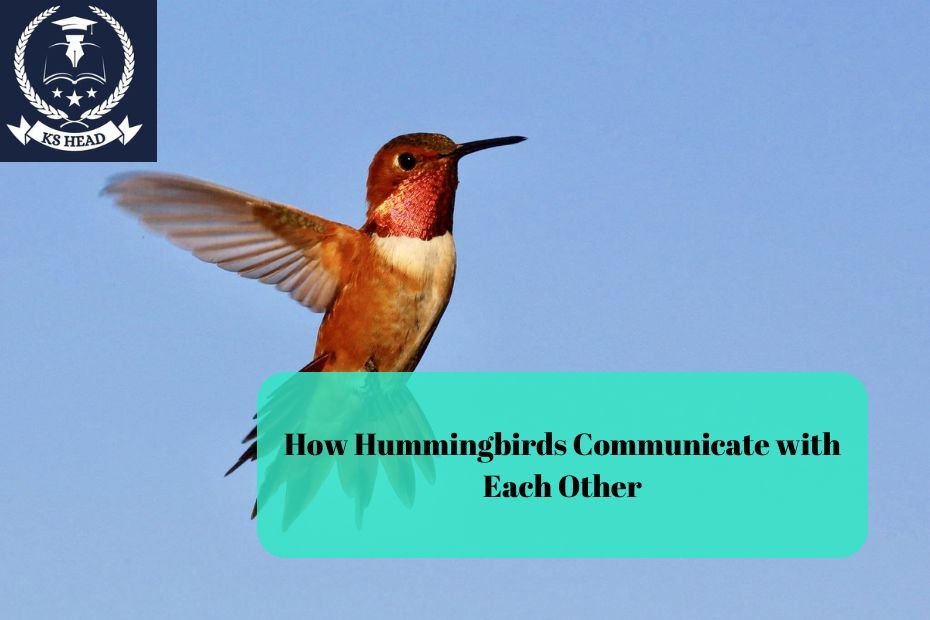Hummingbirds are fascinating creatures known for their vibrant colors and remarkable flying abilities. Beyond their captivating appearance, these tiny birds have intricate communication methods that play a vital role in their social interactions and survival. This article explores how hummingbirds communicate with each other, focusing on their vocalizations, body language, and visual displays.
Table of Contents
- Introduction
- Vocal Communication
- Types of Calls
- Purpose of Vocalizations
- Body Language
- Postures and Movements
- Aggressive Behaviors
- Visual Displays
- Color and Iridescence
- Flight Patterns
- Social Interactions
- Mating Rituals
- Territorial Behavior
- Conclusion
- FAQs
Introduction
Hummingbirds are not only remarkable for their physical attributes but also for their complex communication methods. While they are small, their interactions are anything but simplistic. Communication is essential for hummingbirds to establish territories, attract mates, and socialize within their species. Understanding how these birds convey messages helps us appreciate their behavioral ecology and the roles they play in their ecosystems.
Vocal Communication
1. Types of Calls
Hummingbirds use a variety of vocalizations to communicate with each other. These calls can vary by species and serve different purposes. Common types of calls include:
- Chirps and Tweets: These short, high-pitched sounds are often used in casual communication among hummingbirds. They can signify greetings or indicate presence.
- Challenging Calls: When defending territory, hummingbirds may emit sharper, more aggressive sounds to warn intruders.
- Courtship Songs: During mating displays, male hummingbirds may use specific calls to attract females. These songs can be complex and melodious, showcasing the male’s fitness and genetic quality.
2. Purpose of Vocalizations
The vocalizations of hummingbirds serve multiple purposes, including:
- Attracting Mates: During the breeding season, males often use specific calls to attract females. These vocalizations can demonstrate the male’s health and vitality.
- Defending Territory: Hummingbirds are territorial creatures, especially males. Vocalizations serve as warnings to other birds to stay away from their feeding and nesting areas.
- Establishing Social Bonds: Calls help maintain social interactions within groups, allowing birds to communicate their presence and coordinate activities.
Body Language
1. Postures and Movements
Hummingbirds also rely on body language to communicate. The way they position their bodies and wings can convey different messages.
- Perched Display: When a hummingbird sits on a perch with its feathers fluffed up and tail spread, it may be displaying dominance or asserting territory.
- Hovering: Hummingbirds often hover in front of potential mates, showcasing their agility and stamina. This display is a crucial part of their courtship rituals.
2. Aggressive Behaviors
Aggression is a common aspect of hummingbird communication. When competing for food or territory, they may engage in aggressive behaviors, including:
- Chasing: A dominant hummingbird may chase away intruders from a feeding area. This behavior involves rapid, zigzag flight patterns to intimidate rivals.
- Dive Bombing: Some species engage in dive-bombing behaviors, where they fly quickly and low towards an intruder, creating a startling effect to assert dominance.
Visual Displays
1. Color and Iridescence
Hummingbirds are known for their stunning plumage, which plays a significant role in their communication.
- Bright Colors: The vibrant colors of male hummingbirds are essential for attracting females. These colors can change with the angle of light, creating an iridescent effect that enhances their appeal.
- Feather Displays: During courtship, males may puff out their feathers or perform aerial displays that showcase their colors. This behavior is a visual signal to potential mates about their fitness.
2. Flight Patterns
The flight patterns of hummingbirds are also a form of communication. Their ability to hover, dart, and perform acrobatic maneuvers can convey different messages.
- Aerial Displays: Males often engage in elaborate aerial displays to impress females. These displays can include swoops, dives, and rapid changes in direction.
- Territorial Flights: When defending territory, hummingbirds may fly in a circular pattern around their feeding area to establish dominance and communicate their presence to rivals.
Social Interactions
1. Mating Rituals
Hummingbird mating rituals are intricate and involve various forms of communication. During courtship, males use a combination of vocalizations, visual displays, and aerial maneuvers to attract females.
- Dance of Courtship: Males may perform a “dance” by flying in a U-shaped pattern while producing specific calls. This performance helps demonstrate their physical fitness and attract potential mates.
2. Territorial Behavior
Hummingbirds are known for their territoriality, especially males. Territorial behaviors are crucial for survival as they protect essential resources such as food and nesting sites.
- Defending Feeding Areas: Male hummingbirds often establish and defend feeding territories against other males. They may use vocalizations and aggressive displays to assert dominance.
- Interactions with Other Species: In some cases, hummingbirds may also communicate with other bird species. For example, they may observe the feeding behaviors of larger birds to determine when it is safe to approach a food source.
Conclusion
Hummingbirds are remarkable creatures with complex communication methods that involve vocalizations, body language, and visual displays. These interactions play a vital role in their social structure, mating rituals, and territorial behaviors. Understanding how hummingbirds communicate not only enhances our appreciation for these beautiful birds but also highlights the importance of preserving their habitats and ensuring their survival. As we learn more about their behaviors, we can take steps to protect these tiny aviators and the ecosystems they inhabit.
FAQs
1. What are the most common vocalizations made by hummingbirds?
Hummingbirds produce chirps, tweets, challenging calls, and courtship songs, each serving different communication purposes.
2. How do hummingbirds show aggression towards each other?
Hummingbirds display aggression through behaviors like chasing and dive bombing, which are intended to assert dominance and protect territory.
3. Do all hummingbirds communicate in the same way?
While all hummingbirds use vocalizations and body language, specific calls and behaviors may vary among species.
4. How important is visual communication in hummingbirds?
Visual communication, particularly through color and flight patterns, is crucial for attracting mates and asserting dominance in territorial disputes.
5. What can individuals do to help protect hummingbirds and their communication habitats?
Individuals can create hummingbird-friendly gardens, support conservation efforts, and educate others about the importance of preserving natural habitats.

